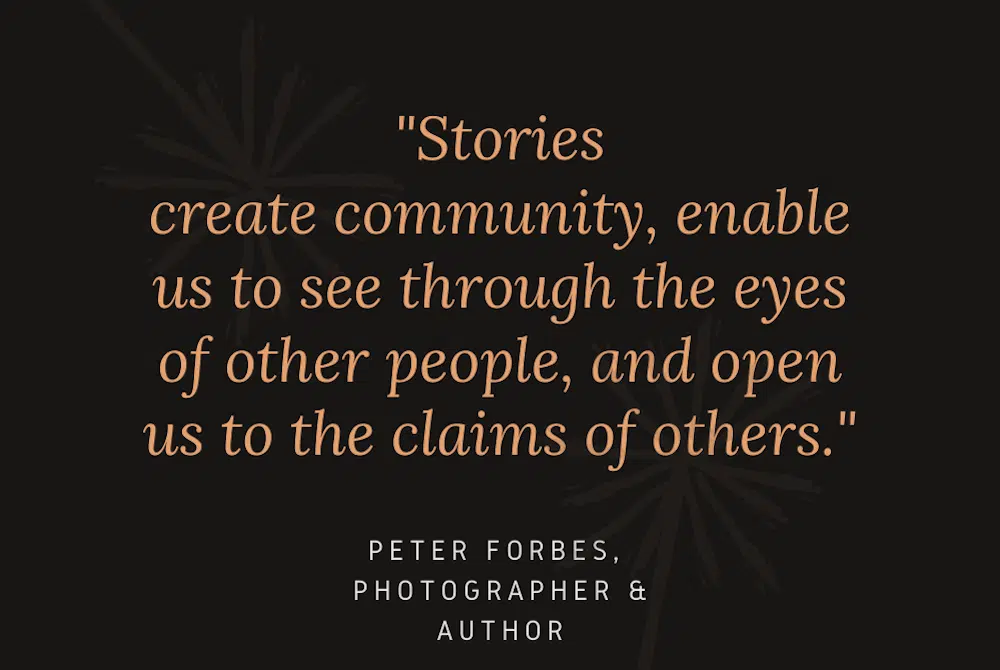10 top tips for charity storytelling
Posted by IMIX on February 19, 2021Former BBC Journalist and Communications and Events Executive at Action Foundation Newcastle, Katie Bryson shares her top tips on how small charities can create powerful communications.

Smaller charities often don’t have the resources to fund a comms person, let alone a team. But there is a way of making things simpler, and that’s stripping it right back to what’s important.
All good charity comms starts with storytelling. If you’ve got a strong story about how your charity has made a difference to someone’s life, then you instantly have incredible content to share across multiple platforms that will raise awareness and put your charity on the map.
So here are my top ten tips for sourcing stories and making the most of them!
1. Identifying a strong story
A story doesn’t have to have a happy ending, or be the end of that person’s journey, but the following elements will hook your reader in:
- Touches people emotionally and makes a connection
- Shows how you can overcome adversity
- Helps the audience see the world differently
- Takes the reader on a journey – the highs and lows
- Educates and empowers
- Provides some hope
2. Where do you get your stories from?
Basically, you will find stories from talking to the people within your organisation… be nosy curious!
- Case studies – has anyone on your team gathered case studies for bid writing/reports? Maybe they have quotes you could use or even better a story you could follow up.
- Volunteers – not only do they have contact with beneficiaries, many of them have lived experience themselves and often have stories of their own to tell
- Members of staff – team members who are working front line will no doubt be really busy, but they are the people who know where the stories are.
Remote working needn’t get in the way. If you’re working from home, create a channel for your team to share stories and anecdotes to provide you with story tip-offs. Make it clear that it’s a confidential channel and that nothing will be shared unless there is full consent from the person involved.
Here at Action Foundation, I’ve set up a group in Teams where staff regularly share their stories. It also creates a bit of a morale boost within the team and connects people with what’s going on – something that can easily get missed when everyone’s working remotely.
3. Use an interpreter
If you’re interviewing someone, consider using an interpreter if the subject isn’t confident speaking English – you’ll get far more detail from them, and they’ll probably be more relaxed too. Our volunteers often are fluent in more than one language, so see if they can help.
You can also check out the Voices in Refuge website who offer a brilliant service, including translation via video calls with fully trained, ethically paid interpreters in a wide range of languages.
4. Informed consent
It’s super important that you have the consent of the person whose story you want to share. If you’ve not already, put a consent form together, preferably one that’s translated into multiple languages – so they are fully informed about where their story could be shared. Give them the option to use first name only, or a different name entirely so they can remain anonymous. Are they okay with their photo or video of them being taken/shared?
For many people seeking asylum, they are escaping a dangerous situation – so appearing on social media/websites can put both themselves and their families at risk.
5. Timing
Timing is key if you want to get maximum pairs of eyes/ears on your story. The media is always hungry for content, so if you can provide them with material that is relevant to something in the news then you’re on to a winner.
In order to do this it’s very wise to keep a calendar of events for the coming months – or horizon gazing as it’s often referred to in the media world. IMIX have created a handy one for the next 12 months – so why not take this and adapt it for your own needs.
6. Press contacts
Build a list of media contacts and record what coverage you get so you can keep track. Talk to other charities in the area to see who they’ve worked with in the past. Ask IMIX for support as they’re an amazing resource and will put you in touch with the right people. You’ll learn as you go along who you can trust to handle things sensitively – but it’s always worth looking back over a reporter’s previous work to see what kind of style/approach they have taken.
When it comes to getting in touch, drop reporters/producers an email – not a full press release – to give a pithy run-down of your story. What’s the most important and interesting thing about it? Follow the email up with a phone call. People hardly ever pick up the phone these days, so your story is way more likely to get noticed if you do this.
7. Setting up your story
Think about the individual news outlet. How do they present stories normally? If it’s regional TV news, what kind of elements would they need to film that story? If it’s a radio show, who would they need to talk to? Explain to them what people you can give them to talk to, what pictures are available and what footage you can provide or what they can come and film/photograph and when. Make it EASY for them. It will also be less stressful for you if you have got everything organised in advance before speaking to them.
Bear in mind that stories can easily get dropped on a day where breaking news crops up and pushes other stories down their agenda. Keep in touch with the reporter/producer to find out what’s going on so you’re kept in the loop about when it will be broadcast.
You could offer a reporter the chance to be the only one to have your story with an exclusive. If you do this, don’t put it your own version of it up on your website/social media until after it’s been broadcast/published.
8. Be protective
If you have arranged for the reporter to interview people with lived experience, make sure you or someone else they trust is there to support them while they are being interviewed. Be prescriptive with the media outlet about what the individual has agreed to in terms of their name, being identifiable and what they are willing to discuss and make sure this is thoroughly followed.
9. Website/Blog
Even if you’ve not managed to secure any press for your story, always write up material for your charity’s blog/website. A Q&A format works well or take your time and write it in the style of a magazine feature – it largely depends on how much detail you get. Take your readers on the journey, and then give them a call to action at the end – do you want them to donate to a campaign, sign up to volunteer or go and sign a petition – always use the opportunity to send them somewhere useful!
10. Social media and newsletter
Lift quotes from your story to share across your social media channels – really hook people in with the most powerful aspect of the story. What will capture people’s attention the most and make them want to read the full article? We’ve often had the press get in touch when they’ve seen one of our stories on social media.
Don’t forget to share stories with your supporters via your email newsletter too – in my experience these are the most clicked on elements of our monthly round-up.
Use it again! A good story never loses its appeal. Promote it on social media when you’re going through a quiet patch, or why not do a follow-up on where that person is now/what’s happened to them since you last spoke to them.
Katie Bryson is an ex-BBC journalist and blogger who has found her home in charity communications, working for Newcastle-based Refugee charity Action Foundation, managing their social media, website and press coverage, as well as running events.




